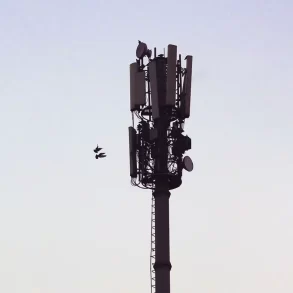Cellular Neural Networks theory (CNN) is an incredibly powerful and remarkably versatile framework that provides a solid foundation for modeling and analyzing complex systems. It was first introduced by the brilliant minds of Leon O. Chua and Lin Yang, who recognized its immense potential. Since its inception, CNN theory has gained widespread recognition and has been applied in a multitude of fields, ranging from image processing and pattern recognition to the fascinating realm of biological modeling.
In this engrossing blog post, we will embark on an exhilarating journey into the depths of CNN theory, unraveling its fundamental principles, exploring its key components, and delving into its vast array of applications. By the time you reach the conclusion of this enlightening article, you will possess a robust comprehension of CNN theory and its extraordinary ability to tackle real-world problems head-on. Prepare to be captivated by the captivating intricacies of CNN theory!
What are Cellular Neural Networks?
Cellular Neural Networks Theory (CNNs) are a class of nonlinear dynamical systems that consist of interconnected processing elements called cells. These cells are arranged in a regular grid-like structure and communicate with each other through weighted connections. Each cell is characterized by its state variables, which represent its current state or behavior, and its local interaction with neighboring cells.
The behavior of a CNN is determined by a set of local and global templates. These templates define the dynamics of each cell based on its inputs and the inputs from adjacent cells. By applying these templates iteratively, the CNN can exhibit complex patterns and behaviors that emerge from the interactions between its constituent cells.
The Components of Cellular Neural Networks
To better understand CNN theory, let’s explore the key components that make up a cellular neural network:
Traffic Flow Template (TFT): Optimizing Service Data Flows in LTE Network Architecture2.1 Cells
As mentioned earlier, cells are the basic processing elements in a CNN. Each cell has its own state variables, which may include voltage or current values depending on the application. Cells can be classified into different types based on their behavior, such as linear, nonlinear, or even chaotic.
In a CNN, linear cells are responsible for performing basic operations such as addition and multiplication. They are used for tasks such as noise reduction or image enhancement. Nonlinear cells, on the other hand, perform more complex operations and are used for tasks like pattern recognition or edge detection.
Chaotic cells in CNN exhibit chaotic dynamics, meaning small changes in initial conditions lead to different outputs. They are used in applications that require random or unpredictable behavior, such as cryptography or random number generation.
Logo Design Trends 2024: Exploring Emerging Branding StrategiesThe connections between cells in CNN form a template matrix, which determines the strength and nature of interactions between neighboring cells. Manipulating the template matrix allows control over the CNN’s behavior and functionality.
2.2 Templates
Convolutional neural networks rely on templates to dictate the behavior of individual cells, making them an integral component of the network’s functionality. They determine how a cell’s variables change based on its inputs and inputs from neighboring cells. Templates can be customized to achieve specific functions or behaviors in the network.
By manipulating templates, researchers and engineers can design convolutional neural networks that can perform tasks like image recognition, natural language processing, and autonomous driving. Templates are flexible and allow for the incorporation of domain knowledge and prior information, enabling the network to learn and make predictions based on specific patterns and features.
How to Delete a Trello Board: A Step-by-Step GuideTemplates can be adjusted and optimized through a process called training. During training, the network learns from a large dataset and adjusts the parameters of the templates to minimize the difference between its predicted outputs and the correct labels. This iterative process of learning and adjustment, often using algorithms like backpropagation, improves the network’s performance.
Templates also serve as a way to share parameters within a convolutional neural network. By sharing parameters, the network can efficiently recognize similar patterns or features across different parts of an input. This parameter sharing reduces the number of parameters in the network, making it more computationally efficient and reducing the risk of overfitting.
2.3 Interconnections
In a CNN, interconnections are the crucial links between cells, shaping the flow of information and exerting a profound impact on the network’s behavior. These connections have adjustable weights that control the strength of influence between cells.
What is Video Interaction Guidance?Interconnections have the advantage of capturing local spatial relationships in data through convolutional layers. This allows the network to recognize patterns and structures specific to certain regions. The sharing of learned features across different regions improves computational efficiency and the network’s ability to make accurate predictions on unseen data.
Interconnections also enable and enhance hierarchical learning. Lower-level layers capture low-level features, while higher-level layers learn more complex representations. The interconnected nature of the network allows for the integration of these features, enabling the network to understand complex information for tasks like image classification and natural language processing.
Furthermore, interconnections enable parameter adaptation through backpropagation. During training, the network adjusts its interconnection weights based on desired outputs, improving its accuracy and predictive ability over time.
2.4 Boundary Conditions
The behavior of cells at the edges or boundaries of the CNN grid is defined by boundary conditions. Different boundary conditions can be used to model various scenarios, such as periodic boundary conditions for cyclic behavior or fixed boundary conditions for fixed values at the edges.
There are different types of boundary conditions used in CNN simulations. The periodic boundary condition wraps the grid around to create a cyclic behavior, which is useful for modeling systems with periodicity or studying phenomena with waves or oscillations.
The fixed value boundary condition keeps the values at the edges constant, which is helpful for simulating scenarios with physical barriers or systems with fixed boundaries.
There are also more advanced techniques, such as the reflective boundary condition that mimics reflections, and the absorbing boundary condition that simulates absorption.
The choice of boundary conditions depends on the specific scenario and desired behavior. It’s important to carefully consider the appropriate conditions for accurate simulations. Different conditions may also impact computational efficiency and performance.
2.5 External Inputs
In addition to intercellular communication, CNNs can also receive external inputs that drive the network’s behavior. These inputs can be used to model external stimuli or to integrate CNNs with other systems.
External inputs in CNNs are incorporated through input layers in the network architecture. These layers receive and preprocess the inputs before passing them to subsequent layers for further processing.
Input layers are designed to handle different types of inputs based on the application’s needs. For image recognition tasks, input layers process image data by normalizing, resizing, and augmenting it. In natural language processing tasks, input layers handle text data by tokenizing, embedding, and padding it.
CNNs can also receive real-time inputs during operation, allowing them to adapt to changing conditions. For example, in autonomous driving systems, CNNs can use inputs from sensors like cameras, LIDAR, and radar to make driving decisions.
Furthermore, CNNs can integrate with other systems to receive inputs from external sources. This integration enriches their knowledge and improves their predictions or decisions. They can receive inputs from databases, web services, or other neural networks.
The Mathematical Formulation of Cellular Neural Networks
To mathematically describe the behavior of cellular neural networks, we need to define the equations that govern the dynamics of each cell. The equations typically involve the state variables of a cell, its inputs from neighboring cells, and any external inputs. The general form of the equations for a CNN can be written as:
dx/dt = F(x) + G(u) + H(x) ⊗ w,
where x represents the state variables of a cell, u denotes the external inputs, F(x) represents the internal dynamics of a cell, G(u) represents the effect of external inputs on a cell, H(x) represents the intercellular interactions, and ⊗ denotes convolution operation with weights w.
The specific forms of F(x), G(u), and H(x) depend on the desired behavior and function of the CNN. By manipulating these functions and tuning the weights w, we can achieve various behaviors such as pattern formation, image processing, or even chaotic dynamics.
Applications of Cellular Neural Networks
Cellular Neural Networks have found numerous applications across different domains. Let’s explore some of these applications:
4.1 Image Processing
Convolutional Neural Networks (CNNs) have become incredibly popular in the field of image processing due to their versatility and effectiveness in a range of tasks. One of the key applications of CNNs in image processing is edge detection, where the network is able to identify and highlight the edges of objects within an image. This can be particularly useful in tasks such as object recognition or segmentation.
Additionally, CNNs are also widely utilized for image enhancement, allowing for the improvement of image quality by reducing noise, adjusting brightness and contrast, and enhancing details. This can be beneficial in various domains, including medical imaging, surveillance, and photography.
Furthermore, CNNs excel at feature extraction, which involves identifying and extracting relevant features from an image. This process enables the network to understand and differentiate between different objects or patterns within an image. By extracting these features, CNNs can be used for tasks such as object classification, object detection, and content-based image retrieval.
One of the major advantages of CNNs in image processing is their ability to perform parallel processing, which allows for the efficient handling of large amounts of image data. By processing multiple parts of an image simultaneously, CNNs greatly reduce computational time and make it feasible to work with high-resolution images or real-time video data.
4.2 Pattern Recognition
CNNs are popular for their exceptional ability to recognize patterns. After training on a set of patterns or images, they can accurately identify new patterns by comparing them to what they’ve learned. CNNs are incredibly valuable for tasks such as object recognition and handwriting analysis. Their ability to recognize complex patterns has revolutionized computer vision and opened up many possibilities in different fields.
CNNs are great at recognizing patterns because of their unique design. Unlike traditional neural networks, CNNs have specialized layers like convolutional layers, pooling layers, and fully connected layers. These layers work together to process information from input data.
Convolutional layers use filters to find patterns in images and create feature maps that capture important characteristics. By using multiple filters, CNNs can learn different features at different levels.
Pooling layers decrease the size of feature maps while keeping the important information. This helps reduce complexity and makes the network more adaptable to different images.
Fully connected layers connect all neurons between layers for high-level reasoning. They use learned features to make accurate predictions. Techniques like dropout regularization and ReLU activation functions help improve accuracy.
4.3 Biological Modeling
Cellular Neural Networks have also been applied in biological modeling to simulate complex biological processes. By mapping biological systems onto CNN architectures, researchers can gain insights into the dynamics and behavior of biological systems such as neural networks or genetic regulatory networks.
Cellular Neural Networks are used in biological modeling to study neural networks and genetic regulatory networks. These networks are complex and challenging to understand, but by simulating their behavior using Cellular Neural Networks, researchers can gain insights into how they work.
Simulations help scientists explore how neural networks process information, create patterns, and exhibit emergent behavior. By adjusting the parameters of the Cellular Neural Network model, researchers can simulate different aspects of neural activity like synaptic connections and signal propagation, allowing them to study how changes in these parameters affect overall network behavior.
Cellular Neural Networks are also used to model genetic regulatory networks, which control gene expression and biological processes. Simulating these networks helps researchers understand how genes interact and how gene expression patterns are formed and modulated. This knowledge has important applications in medicine, helping us understand diseases caused by gene expression dysregulation and identify potential therapeutic targets.
4.4 Data Compression
CNNs have been used for data compression tasks such as image or video compression. By exploiting the similarities and redundancies in data, CNNs can efficiently compress information while preserving essential features.
CNN-based data compression techniques have been proven to be highly effective in reducing the size of digital content without compromising its quality. By leveraging the interconnectedness of neural network layers, CNNs are able to analyze and extract relevant patterns and features from the input data. This enables them to identify redundancies and compress the information in a way that minimizes storage requirements.
In image and video compression, CNNs excel at capturing spatial and temporal correlations, which are crucial for preserving the visual integrity of the content. The convolutional layers of the network perform local operations, allowing them to detect and encode patterns in a localized manner. This localized approach is particularly advantageous in image compression, as it enables CNNs to capture intricate details while still achieving significant compression ratios.
Moreover, CNNs are highly adept at leveraging inter-frame dependencies in video compression. By considering the temporal relationship between consecutive frames, CNN-based compression algorithms can efficiently represent the changes from one frame to another, resulting in higher compression rates. This is particularly beneficial in applications where real-time streaming or limited bandwidth is a concern.
The use of CNNs for data compression extends beyond just images and videos. They have also been applied successfully in audio compression tasks, where they can capture the frequency-domain characteristics of audio signals. By leveraging the hierarchical structure of CNNs, these models are capable of capturing complex audio patterns and reducing audio data size while maintaining perceptual quality.
4.5 Optimization Problems
Cellular Neural Networks (CNNs) are a versatile tool that can be utilized not just for computational tasks, but also for solving optimization problems. These problems involve finding the best possible solution while adhering to specific constraints or objectives. By transforming an optimization problem into a CNN configuration, the network’s parallel processing capabilities can be harnessed to conduct a thorough and efficient search for optimal solutions. This approach allows for a more streamlined and effective optimization process, ultimately leading to improved outcomes.
CNNs are highly advantageous for solving optimization problems. One key advantage is their ability to handle large and complex tasks. They can process lots of data at once, making them great for problems with many variables and constraints.
Another advantage is that CNNs can learn and adapt from the data they process. This means they can adjust their parameters and configurations to fit different problems, leading to more accurate and efficient solutions.
CNNs are also good at handling non-linear and challenging optimization problems. They can capture non-linear relationships in the data, giving them a better chance of finding better solutions.
CNNs are also useful for real-time optimization tasks. They can quickly process new data and update their solutions as needed, making them great for dynamic problems that need quick decision-making.
To read the Full Form of GPT blog post, you can simply click on the Full Form of GPT: The Importance of Understanding in NLP.
Wrapping Up
In conclusion, Cellular Neural Networks theory provides a powerful framework for modeling and understanding complex systems. With their interconnected cells, local dynamics, and global templates, CNNs offer versatility and applicability across various domains such as image processing, pattern recognition, biological modeling, data compression, and optimization problems.
To delve deeper into Cellular Neural Networks theory and explore its practical implementations, we invite you to download the PDF file “Understanding Cellular Neural Networks Theory” authored by Leon O. Chua and Lin Yang. This comprehensive guide will provide you with further insights into CNN theory and its potential for solving real-world problems.
Remember, understanding Cellular Neural Networks theory opens up opportunities for innovative solutions in diverse fields. Embrace this powerful framework and unlock new possibilities in your own research or applications.
Note: Click the download button below to get the PDF file “Understanding Cellular Neural Networks Theory.”







